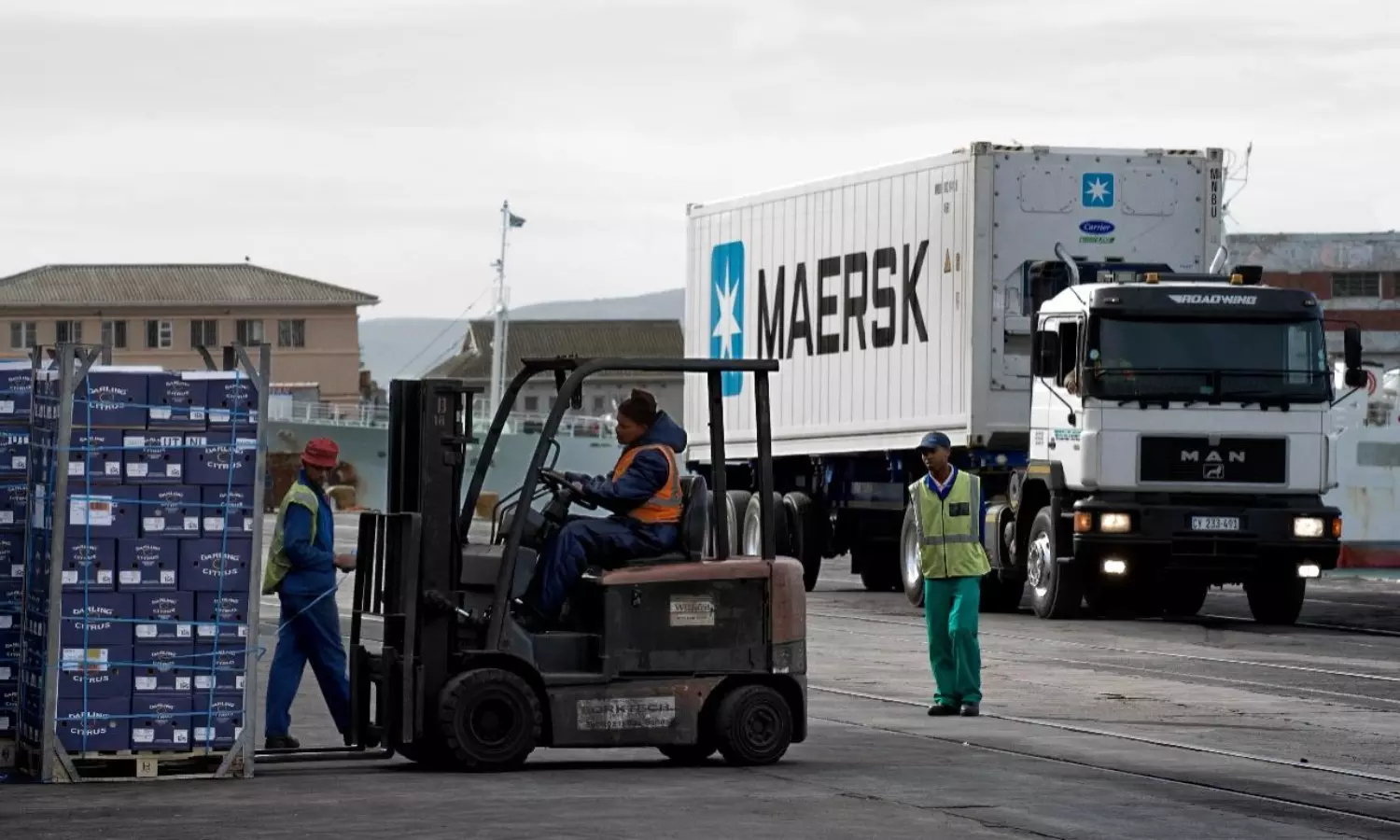New supply chain index shows pressure mounting in South Africa
Consumer inflation increased to 5.9% in December 2021 before moderating slightly to 5.7% in January and February 2022.

APM Terminals Inland Services in South Africa. Image Credit: Flickr
Global supply chain disruptions pushed up consumer price inflation in South Africa to 5.9 percent in December 2021, "mostly due to the impact of higher international crude oil prices on domestic fuel prices and transport costs" before moderating to 5.7 percent in January and February 2022.
"Producer price inflation for intermediate manufactured goods had accelerated to 23.1 percent in November and December 2021, reflective of raw material shortages, before moderating only marginally to 21 percent in January 2022," according to an analysis by A Wolhuter and published by the South African Reserve Bank (SARB).
The analysis compiled a composite supply chain pressure index (CSCPI) from 10 component indicators (including volumes at ports & docks, producer price index for manufactured goods and ratio of inventories to sales in manufacturing and trade). "A composite index facilitates the measurement of multidimensional components by combining individual indicators into a single measure. This index can then be tracked as a gauge to monitor whether pressures are intensifying (an increasing index level) or easing (a decreasing index level)."
South Africa's CSCPI increased sharply from June 2020 onwards after moving broadly sideways within a fairly narrow range for more than 10 years, and rose to its highest level in over 16 years in February 2022. "The increase in CSCPI followed the initial Covid-19-related hard lockdown and reflected falling inventory levels and supply shortages as demand rebounded. From mid-2021, supply chains were further impacted by the surge of the Delta variant and domestic factors such as the civil unrest and Transnet port disruptions in July.
"The CSCPI increased to its highest level in February 2022 as supply chain pressures intensified further with the spread of the Omicron variant, the implementation of a zero Covid-19 policy in China, and the Chinese Lunar New Year impacting on absenteeism among employees along with the further depletion of already low inventory levels. The conflict between Russia and Ukraine could prolong global and domestic supply chain constraints further.
"The accumulation of empty containers at some ports has also delayed the repositioning of containers to major ports. Despite monetary incentives to increase the speed of container pickups, the slow container turnaround times at certain ports in the U.S., U.K. and even in South Africa have compounded supply chain disruptions."
The analysis also drew a comparison of the CSCPI between the current supply chain pressures and just before the global financial crisis in 2007 and 2008.
"Unlike the financial crisis, the Covid-19 pandemic is a completely exogenous and unprecedented shock that suddenly and severely impacted on both the supply and the demand of goods and services without warning, and which solicited considerable monetary and fiscal stimulus. The sharp recovery in demand following the relaxation of the restrictions, particularly for goods, saw trade volumes and prices surge abruptly while supply could not keep up, causing supply chain pressures and bottlenecks."
The CSCPI, according to the study, is useful to monitor whether supply chain pressures are intensifying or easing "which could assist in evaluating the transitory or more permanent nature of rising inflationary pressures emanating from this source. The most recent reading of the CSCPI indicates that domestic supply chain pressures remain elevated and have intensified further in the opening months of 2022."


